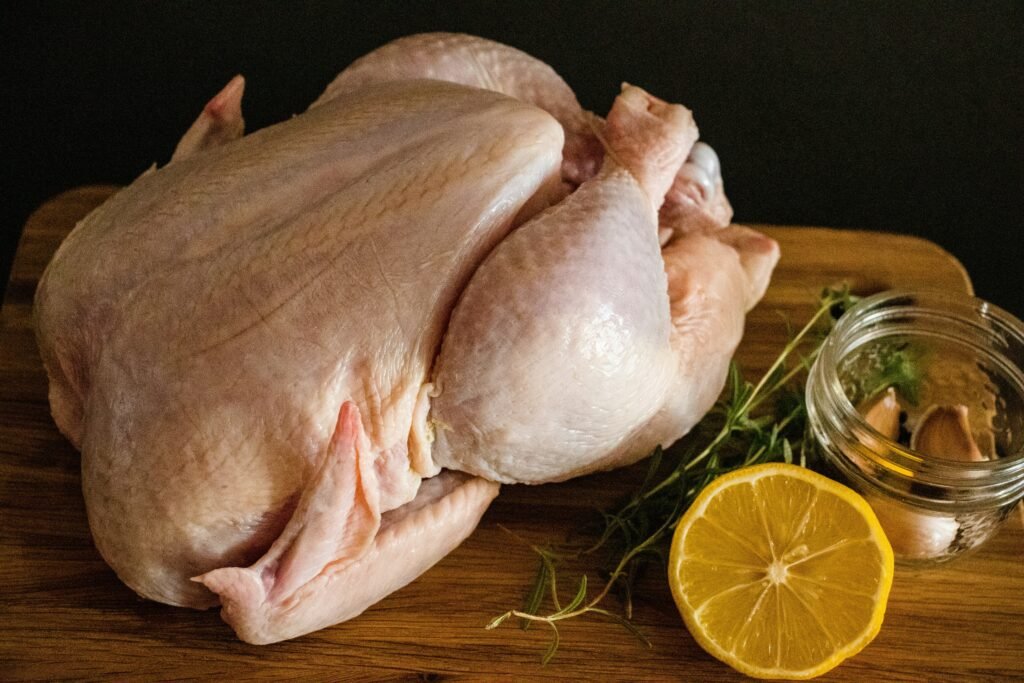
In recent times, corn fed chicken has become a topic of curiosity and preference among UK consumers seeking quality poultry options. While the term might sound straightforward, it carries a range of implications about the bird’s diet, flavour, health benefits, and farming methods. Unlike grass fed products, corn fed chicken relates primarily to the feed source used in intensive and semi-intensive poultry farming, which influences taste, texture, nutrition, and ethical considerations.
As the UK market continues to evolve, understanding corn fed chicken’s place among poultry products is essential. This article explores everything UK consumers need to know in 2025—from what corn fed chicken means, to its nutritional profile, culinary uses, public perception, and how it compares to other feeding practices.
What Is Corn Fed Chicken? A Simple Explanation
Corn fed chicken refers to birds primarily raised on a diet rich in corn and grains rather than pasture or mixed free-range forage. This feed influences the chicken’s fat content, flavour, and sometimes the texture of the meat. Corn, being high in carbohydrates, contributes to a sweeter taste and lighter colour in the flesh and skin.
In the UK, corn fed chickens are typically reared in controlled environments where their diets are carefully managed for consistency and efficiency. Some farmers combine corn with other grains or additives approved by UK food safety regulations to ensure balanced nutrition for the birds.
While corn fed chickens are not pasture-raised, they remain distinct from battery-farmed broilers, with varying levels of animal welfare depending on the farm. Due to the efficiency in feeding, corn fed chicken often represents a cost-effective poultry option for consumers.
Nutritional Insights: How Does Corn Fed Chicken Compare?
Corn fed chicken delivers valuable protein, essential amino acids, and micronutrients familiar to traditional poultry. However, like all meat products, diet drives subtle differences in nutritional qualities.
Studies show corn fed chicken to have slightly different fat profiles compared to pasture-raised alternatives. The grain-heavy diet tends to elevate omega-6 fatty acids, which, when balanced, are necessary but in excess may promote inflammation. Conversely, corn fed chicken generally has lower omega-3 content than free-range or pasture-raised birds.
Fat-soluble vitamins like A and E remain present but vary with feed composition. Mineral levels such as selenium and zinc largely depend on soil and feed quality.
Below is a comparative table highlighting typical nutritional differences between corn fed and pasture-raised chickens per 100g of cooked meat:
| Nutrient | Corn Fed Chicken | Pasture-Raised Chicken | Percentage Difference |
|---|---|---|---|
| Protein (g) | 27 | 28 | -3.6% |
| Total Fat (g) | 7 | 5.5 | +27% |
| Omega-3 Fatty Acids (mg) | 40 | 100 | -60% |
| Omega-6 Fatty Acids (mg) | 120 | 60 | +100% |
| Vitamin E (mg) | 1.5 | 2.5 | -40% |
This variance suggests that while corn fed chicken is nutritious and widely available, those prioritising omega-3 intake and lower fat may lean toward pasture-raised options where possible.
Culinary Uses and Taste Profile
Corn fed chicken’s taste is often described as mildly sweet, tender, and consistent in texture. The higher fat content can give the meat juicier qualities when cooked correctly, making it popular in many UK households for roasting, grilling, and frying.
Recipes calling for succulent, flavourful chicken, such as casseroles, chicken pies, or Sunday roasts, especially benefit from corn fed chicken’s reliable palate. However, chefs careful about fat levels may prefer alternatives for lighter dishes or those catering to specific dietary requirements.
The skin tends to be a lighter yellow versus deeper tones seen in pasture-raised birds, reflecting carotenoid content from the corn feed. This visual cue sometimes guides consumer choice, as many UK shoppers favour appearance alongside nutritional claims.
Public Opinion and Consumer Reviews
UK consumers remain divided on corn fed chicken, reflecting broader debates on animal welfare, environmental impact, and health consciousness.
Many appreciate its affordability and dependable taste, often citing it as a staple option that balances quality and price. Online reviews highlight satisfaction in convenience and availability across supermarkets and local butchers.
However, advocates for more ethical or natural eating raise concerns about corn fed methods leading to imbalanced omega fatty acid intake and less natural living conditions for chickens. Movements encouraging free-range and pasture-raised poultry are growing in prominence, driven by UK media campaigns and consumer education.
Buying Tips and Considerations for UK Shoppers
- Check Certification: Look for assurance marks like RSPCA Assured or Freedom Food indicating better welfare standards, even within corn fed options.
- Evaluate Labels Carefully: Terms like “corn fed,” “grain fed,” or “free range” can have flexible definitions—UK buyers should prefer transparent supplier information.
- Consider Your Priorities: For budget-friendly meals and familiar taste, corn fed chicken remains a viable choice without health risks when consumed moderately.
- Balance Your Diet: Incorporate omega-3 rich foods alongside to offset potential fatty acid imbalances.
Limitations and Ethical Considerations
While corn fed chicken serves as accessible protein for many, it faces criticism on several fronts:
- Welfare Concerns: Farming conditions vary, with less access to outdoor areas compared to free-range.
- Environmental Footprint: Grain production involves resource use, and concentrated animal feeding operations have their own ecological impacts.
- Nutritional Trade-offs: Lower omega-3 and higher omega-6 compared to pasture-raised options may not suit all dietary preferences.
FAQs About Corn Fed Chicken in the UK
1. Is corn fed chicken healthier than battery-farmed chicken?
Yes, corn fed chicken generally comes from better welfare farms than battery cages but falls short of free-range standards.
2. Does corn fed chicken taste different?
It has a slightly sweeter and fattier taste than pasture-raised but remains mild and versatile.
3. Are there laws regulating corn fed chicken in the UK?
Yes, all poultry feeds must comply with UK and EU food safety regulations.
4. Can corn fed chicken be frozen?
Yes, freezing retains freshness well if done promptly.
5. Where can I buy corn fed chicken in the UK?
Widely available in supermarkets, independent butchers, and online food retailers.
Final Thoughts
Corn fed chicken holds a significant place in UK kitchens in 2025, balancing affordability, taste, and accessibility. It suits many households looking for reliable protein options without an exorbitant price tag. While it has nutritional differences and ethical considerations compared with pasture-raised birds, informed consumers can enjoy corn fed chicken as part of a balanced diet. As the UK market shifts, awareness around feeding practices and animal welfare will continue growing, leading to more choices for consumers with varying values and needs.
For more UK food insights and trends, check these related reads:
Extractor Fan Models and Installation
Luton Town vs Coventry City Standings 2025
Youngest Darts Champion Insight
Rhian Sugden OnlyFans Empowerment
No Thru Traffic Signs UK Guide
Greggs Breakfast End Time UK 2025
Nuneaton Borough Fans Forum Deep Dive
Best Pram Fan UK 2025
Torquay Fans Forum Community Heartbeat
Cadbury Christmas Selection Box Guide 2025
Hair Sun Protection 2025 Guide
BBC Good Food
NHS Healthy Eating





